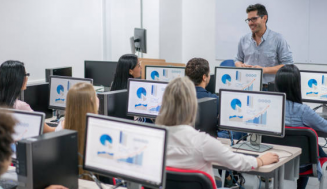BECE Past Questions & Answers – 2002 (SCIENCE)
SCIENCE
SECTION B ESSAY
1 hour
[60 marks]
Answer three questions only from this section.
Illustrate your answers wherever possible, with large, clear and fully labelled diagrams. Credit will be given for clarity of expression and orderly presentation of material.
All questions carry equal marks
1. (a) Classify each of the following substances as colloids, suspension or solution: Smoke, breast milk, powdered milk in water, seawater, mist, steel.
(b) (i) Define valency
(ii) State the valencies of the following elements and radicals:
(α) Iron
(β) Zinc
(γ) Hydroxyl
(λ) Carbonate
(c) Give one difference between plants and animals in terms of
(i) feeding
(ii) (iii) excretion sensitivity
(d)
(i) (ii)
Drawand label a diagram to show how an image is formed in a pin hole camera. State the characteristics of the image formed.

2. (a) State three differences between molecules in a solid state and liquid state.
(b) (i) What is a solution?
(ii) Difference between solutions and mixtures in terms of particle sizes.
(c) Name the elements which makeup the following compounds: (i) water
(ii) common salt
(iii) ammonia
(d) Copy and complete the table below
Disease Vector Causative agent Symptoms
Malaria
Sleeping sickness
(e) (i) What is a man-made satellite?
(ii) Give two examples of natural satellites.
(iii) Mention two applications of man-madesatellites
3.
(a)
Name the four main parts of a flower.
(b) (c) Give two external features of plants pollinated by wind.
Construct a food chain using any four of the organisms listed below. Goat, lizard, bird, snake,earthworm,grass cutter,grass, ant, cassava
(d) (i) The energy input of a machine is 7.5 J and the output energy is 5.0 J. Calculate the
efficiency of the machine.
(ii) Explain why the efficiency of a machine is always less than 1.
4.
(a)
(i)
What is an embryo?
(ii) (iii) Where does an embryo develop in the female mammal? Describe briefly how a developing embryo breathes in oxygen.
(b) Name three plant nutrients
(c) (i) What is an electrical insulator?
(ii) Explain how a comb rubbed vigorously on dry hair attracts small pieces of paper.
(d) (i) List the chemical substances that are used in the preparation of ammonia gas in the
laboratory.
(ii) Write down balanced chemical equation for the reaction.
CLICK TO VIEW ANSWERS TO PART 2
SCIENCE Section B
SOLUTIONS
ESSAY
1. (a) Classification:
COLLOIDS
SUSPENSION
SOLUTION
smoke
breast milk mist
powdered milk in water
seawater steel
(b) (i) Valency: The combining power o fan atom/ ion/ radical
(determined by the absolute value of the charge)
(ii) SUBSTANCE VALENCIES:
(α) Iron: 2 or 3
(β) Zinc: 2 (γ) Hydroxyl: 1 (λ) Carbonate: 2
(c)
PLANTS ANIMALS
Feeding
Prepare their own food Depend on plants and other
animals for food
Excretion Excretory materials are stored in
the plants Excretory materials are removed
from the body
Sensitivity Most plants do not show
sensitivity Animals exhibit high levels of
sensitivity
(d) (i) Diagram showing formation of image in pinhole camera
(ii) Characteristics of image formed in pinhole camera
Real (formed on screen)
Inverted (turn upside-down)
Diminished (smaller than object)
2. (a)
SOLID LIQUID
Molecules are closely packed together Molecules are widely spaced
Molecules vibrate about a fixed
position
Molecules are free to move about
Molecules have low energy Molecules have high energy
Strong forces of attraction among
molecules Weak forces of attraction among
molecules
(b) (i) Solution
A liquid which has one or more other substances uniformly dissolved in it.
Or:
A fluid consisting of two or more substances mixed together and uniformly dispersed
(ii)
The particles in solutions are much smaller and evenly distributed
The particles in mixtures may be much larger and possibly unevenly distributed
(c) Elements that makeup:
(i) (ii) (iii) water: common salt: ammonia: hydrogen and oxygen sodium and chlorine nitrogen and hydrogen
(d)
Disease
Vector Causative
agent
Symptoms
Malaria
female anopheles mosquito
plasmodium
(protozoan) fever
body pains
feeling cold or hot
headache
nausea
lack of appetite
Sleeping sickness
tsetse fly
trypanosome
(protozoan) accelerated heartbeat
rash
fever
excessive sleeping
lack of appetite
(e) (i) Man-made satellite
An artificial heavenly body put into orbit around a larger heavenly body by man/ humans
(ii)
Examples of natural satellites:
The moon (as a satellite of the earth)
The earth (as a satellite of the sun)
(iii)
Applications of man-made satellites
Weather studies and forecasting
Telecommunication
Sending and receiving TV signals
Taking photographs from space for various purposes
Internet networking
Global Positioning System (GPS)-a worldwide navigation system
3. (a) Four main parts of a flower
Petalor corolla(group of petals)
Sepalor calyx(group of sepals)
Pistil(style, stigma and ovary)
Stamen (anther and filament)
(b) External features of plants pollinated by wind
Dull coloured petals
Low or no nectar
Low or no scent
Plentiful and light pollen grains
Highly sticky and hairy stigma
[any two]
(c) Food chain using: Goat, lizard, bird, snake,earthworm,grass cutter,grass, ant, cassava
Grass → earthworm→ bird → snake
Cassava→ant →lizard →snake
Grass →grass cutter →snake→bird
Cassava→ant →bird →snake
(d) (i) Efficiency = (Energy output/ Energy input) ×100%
= (5.0 J / 7.5J) × 100%
= (50 / 75) × 100%
= (2 / 3) × 100%
= 0.6667 × 100%
= 66.67%
Or 0.67
(ii) Part of the energy input is used to overcome friction and also expended as heat.
4. (a) (i) Embryo
An organism at the developmental stage after the zygote stage(and for a mammal, before
the foetal stage)
Or:
The organism formed after fertilization has occurred.
(ii)
Where an embryo develops
Uterus or womb
(iii)
How a developing embryo breathes in oxygen
Through the placenta, oxygen diffuses from the mother’s blood into the embryo.
(b) Plant nutrients
Phosphorus, Calcium, Nitrogen, Potassium,Sulphur, Magnesium,Zinc [any three]
(c) (i) An electrical insulator
A substance or material that does not allow electric current to pass through
(ii)
How a comb rubbed on hair attracts small pieces of paper
The comb becomes charged when vigorously rubbed on dry hair. When the comb is brought near small pieces of paper, they also become charged oppositely by induction. The pieces of paper are then attracted to the charged comb as a result of the opposite charge.
(d)
(i)
Chemicals for ammonia gas preparation
Ammonium chloride and Calcium hydroxide
(ii)
Balanced chemical equation
NH4Cl + Ca(OH)2 → NH3 + CaCl2+ H2O





